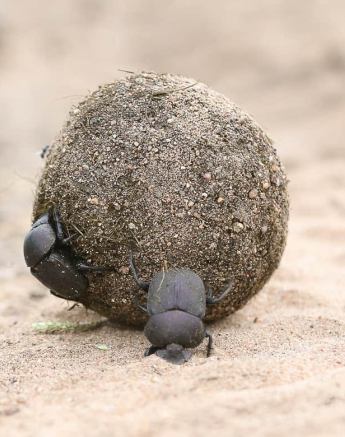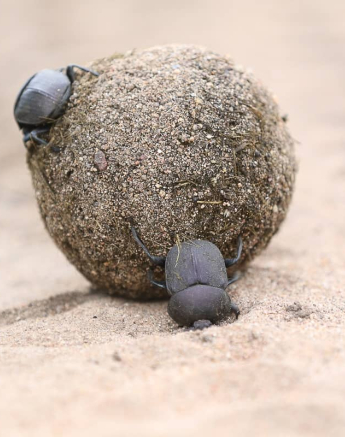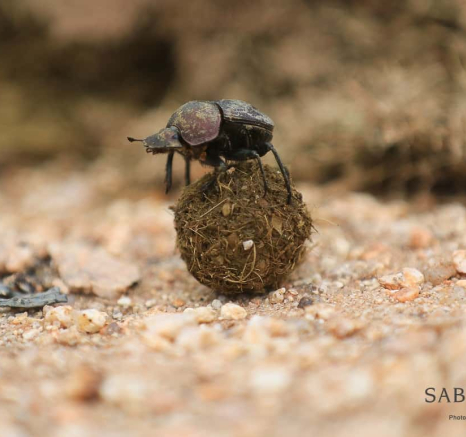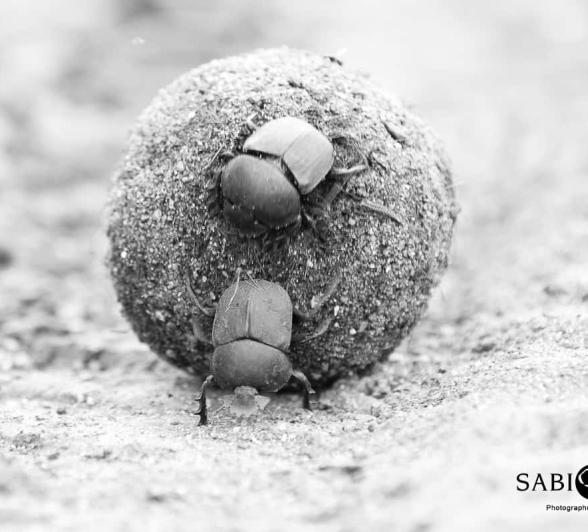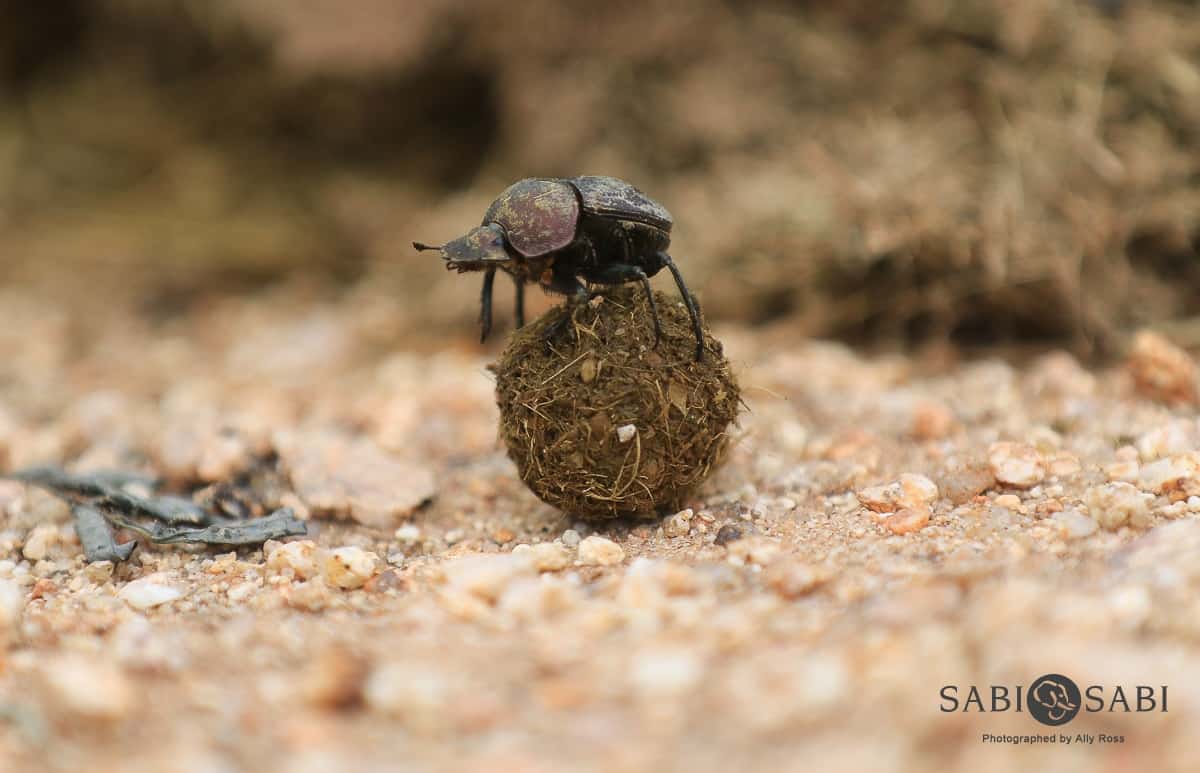Dung Beetle
on Mar 15, 2019There are about 7000 species of dung beetle described worldwide, of which Southern Africa houses the widest variety, including about 780 species!
Order: Coleoptra
Phylum: Arthropoda
Family name: Scarabaeidae
Classification: Insect
IUCN status: Least concern
Lifespan (in wild): 3 years
Body length: 0.5cm - 3cm
Diet: Dung
Habitat: Grassland and forest
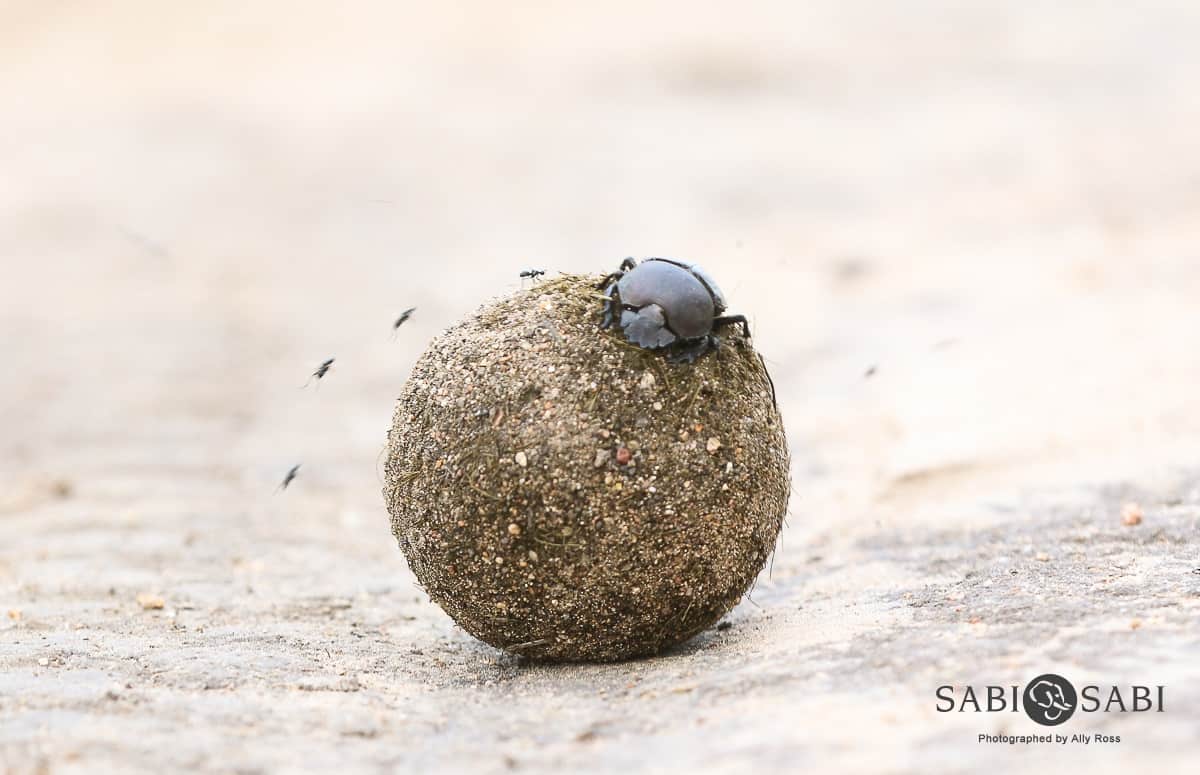
Every summer I wait in anticipation for the bush to come alive. Each dung pile you come across pulsates with life as these dung piles become the work place of these fascinating creatures, bustling for a piece of fresh dung.
These dung beetles are superbly designed for their lifestyle. They have a beautiful metallic sheen and are very robust. Stout front legs, which are serrated, aid them in cutting through compacted dung. Their head is used for the digging, raking and scrapping together of dung followed by patting into a ball. The small antennae found on the dung beetle are most likely used for navigation and detection of dung piles.
The rollers, tunnellers, dwellers and stealers...
There are four different family groups of dung beetles classified according to what they do with the dung they collect.
- The endocoprids, known as the “dwellers”, live and breed within the pile of dung itself.
- The paracoprids, known as the “tunnellers”, bury dung balls directly below the dung pile as their larval food supplies.
- The telecoprids, known as the “rollers”, take balls of dung that they roll, away from the original site to be eaten and buried. By doing this, they actually reduce the competition with the endocoprids and paracoprids. The telecoprid species are the species often seen pushing their dung balls around with their hind legs.
- The cleptocoprids are the notorious kleptomaniacs of the dung beetle world. They steal dung balls from the telecoprids in which they lay their eggs.
One could say that the dung beetle is the epitome of love and romanticism. The lengths they go will go to, to find a mate is quite admirable.
The “Telecoprids” will roll balls for particular uses during their time with a mate. The pair may roll a ball to feed on; we refer to this as a “food ball”. The male may really impress the female by rolling what we refer to as a “nuptial ball”, which is rolled into a hole in where they will mate and consume the ball together.
A “brood ball” is rolled as food storage for their larvae. A female can lay up to 60 eggs per season. This means that the male will have to roll 60 of these brood balls alone. The female, perched on top of the dung ball, will lay one single egg. She pats this down giving the finished ball a pear-shaped appearance. The ball is buried, and the outer shell will harden, leaving the insides moist. The remains of the moist dung are what the larvae feed on before pupating.
Interesting facts
- In one pile of elephant dung, we can find up to 16 000 dung beetles! It is very important to try where you can, to not drive over dung.
- Dung beetles have SUPERHUMAN STRENGTH; ball-rolling dung beetles can roll balls up to 50 (occasionally 80) times heavier than themselves. Some species pulling up to 1.141 times their body weight, this is equivalent to a human pulling six double-decker buses full of people... That means, that in relation to its size, dung beetles are not only the strongest insect; they are the strongest animal in the world.
Why are they useful?
If it weren’t for these little critters, the ground would be covered by old hardened dung. Grass and plants would find it incredibly difficult to grow in such conditions. Dung beetles are exceptionally ecologically important as they can move up to 1 metric ton of dung per hectare per year. By doing so they eradicate the eggs of internal parasites and they also reduce the population’s pest species like flies.
By returning nutrients from the dung back to the earth, they inadvertently facilitate the germination of seed that are found in the dung that they bury.
Navigation 101
Making a fast beeline away from a dung pile is crucial for these little guys. Dung beetles live in a rough-and-tumble world, where competition for dung is a fierce one. Once dung beetles have sniffed out a steaming pile of dung, the race is on! They painstakingly roll a ball and try get away from the chaotic mound as soon as possible.
Now, the burning question is how do they know where to go?
Thanks to special photoreceptors, the dung beetles can detect a symmetrical pattern of polarized light that appears around the sun.
But how do they move at night?
Scientific research shows that dung beetles can navigate themselves by the bright stripe of light generated by our Milky Way, thus moving in a straight line relative to it.
How cool is that!?
Most memorable sighting
On a hot summer’s afternoon, we came across, what my guests referred to as a “moving rock in the road”. On closer inspection we found that it was a dung beetle rolling a dung ball, trying to navigate his way over the rough terrain. We sat for almost 35 minutes on the ground watching him move around. It was interesting to see the dynamics between the male and the female and how quick they are to re-orientate themselves should they fall off.
Photo content
